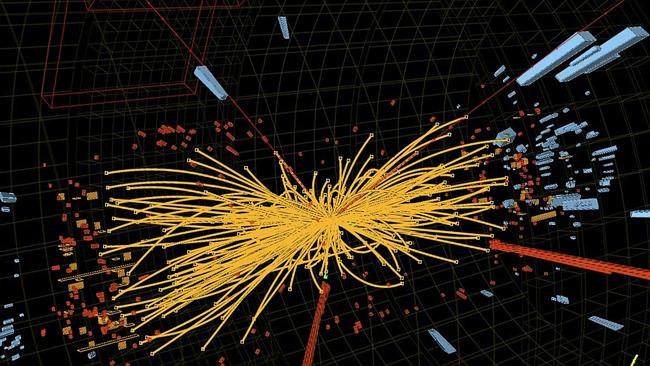Higgs boson: Super simple explainer behind the Nobel prize winner
SCIENTISTS develop theory, make groundbreaking discovery, win Nobel prize. But if you're still asking "what the Higgs?" read this.

YOU may have heard the news; scientists develop theory, make groundbreaking discovery, win Nobel prize in physics.
Overnight, theoretical physicists Peter Higgs, 84, of the University of Edinburgh in Scotland, and François Englert, 80, of the University Libre de Bruxelles in Belgium, won the coveted prize for their hypothesis of the "God particle" (otherwise known as the Higgs boson), which begins to explain the complex structure of the universe and the world we live in.
But, if you're like most citizens of this earth who don't possess a degree in physics, you may be scratching your head wondering what all the fuss is about, and what exactly the Higgs boson particle is.
Let us explain, because frankly, it's kind of complicated.
THE SCIENCE BEHIND HIGGS BOSON
The Higgs boson is like the glue of the universe; it's what joins everything together and gives it matter. It's how the cosmos, and everything that lives within it, including planets, stars and living creatures, come to have mass.
VIDEO: Official announcement about the 2013 #NobelPrize in #Physics to François Englert & Peter W. Higgs http://t.co/TTunWX3ABe
— Nobelprize_org (@Nobelprize_org) October 8, 2013
Often referred to as "the God particle" because it is believed to be the cause of the "Big Bang" that created the universe way back when, the discovery of Higgs boson is such a big deal because it confirms previous theories surrounding matter and how it works in compliance with the universe.
A trillionth of a second after said Bang, an energy force described by scientists as the "Higgs field" was turned on and as the universe grew, so did the field. It's this "field" that began to impart mass on its subjects and was used to discover the Higgs boson.
Rolf Heuer of CERN: "It's a very important theory, and a ground-breaking discovery" #BosonNobel #NobelPrize
— CERN (@CERN) October 8, 2013
In order to do this, The European Organization for Nuclear Research, or CERN, spent $10 billion constructing a giant, 27km track called a 'Collider' buried below ground in Geneva, Switzerland (it also runs through France).
The 'Collider' shoots protons at each other. The protons crash together to produce a flash of energy, or a subatomic particle. In some cases, a Higgs boson is born.
It's slippery and tricky to spot and CERN says it is an incredibly "rare event - it takes around 1 trillion (1012) proton-proton collisions for each observed event."
But the discovery matters because it confirms the validity of the Standard Model of particle physics, which according to CBS, "dictates how the basic pieces of matter act together" and is the "authoritative theory for particle physics".
In other words, it forms the basis for how all visible matter are molecularly formed and governs the structure of our behaviour.
Until last year, the Higgs boson was the last piece of the puzzle yet to be verified.
Now it is, the door is open for a host of new discoveries.
The future, it seems, is bright.
"We also hope to shed light on dark matter, which is the mysterious stuff that accounts for 25 per cent of the mass of the universe," Kyle Cranmer, an assistant professor of Physics at New York University told CBS.
Continue the conversation via Twitter @the_mattyoung | @newscomauHQ








